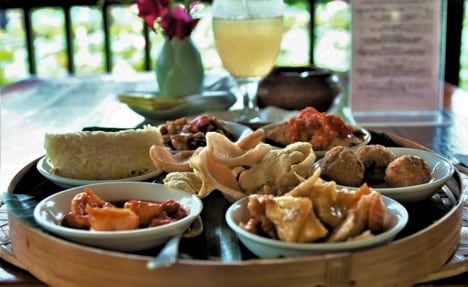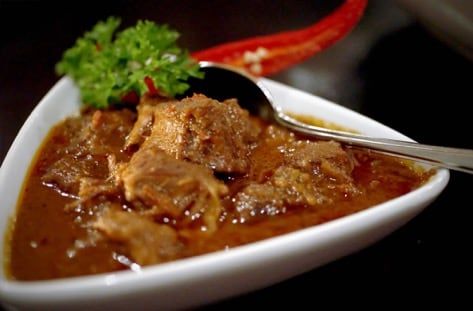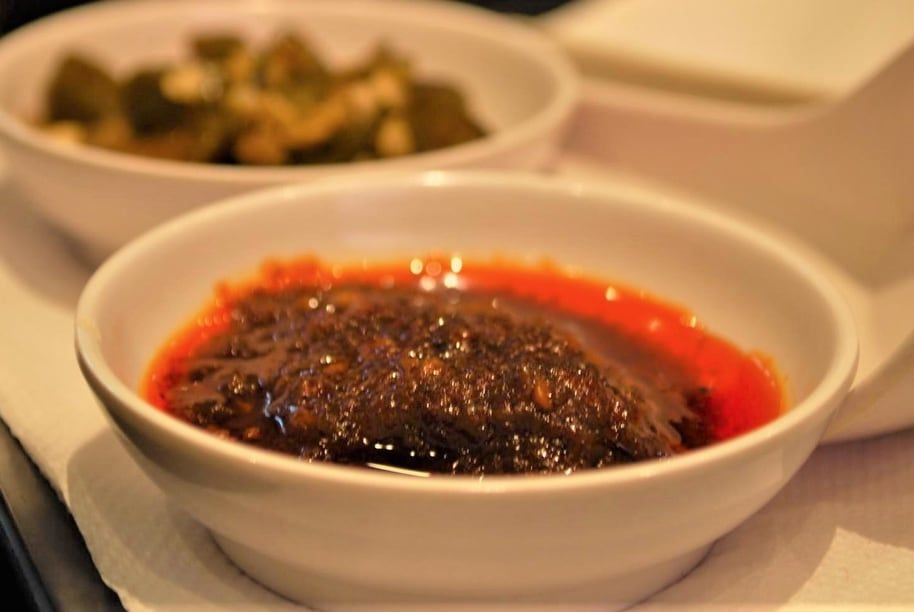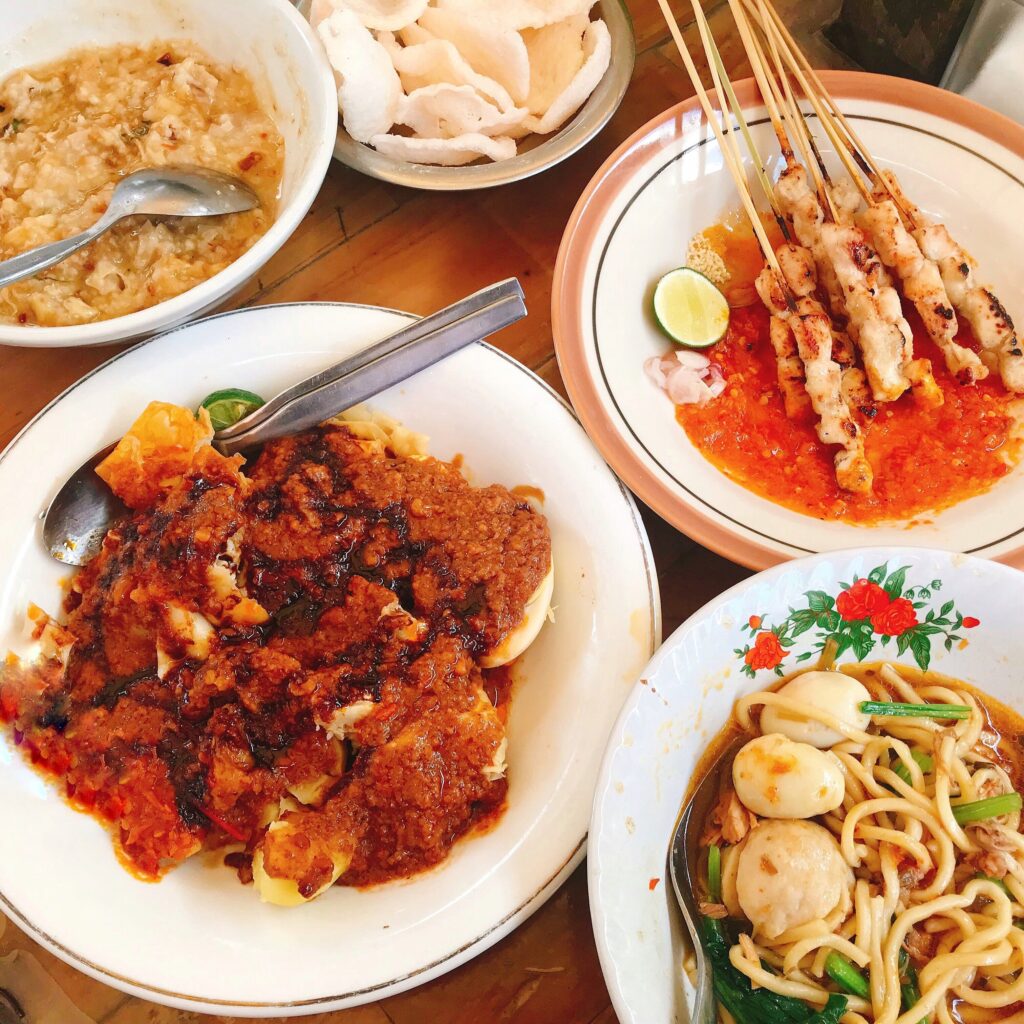Published on October 1, 2019
Taste of Southeast Asia: Dining in Indonesia

Welcome to Taste of ASEAN and our second blog series, featuring delicious cuisines from around Southeast Asia. Join us on this culinary tour of each county’s signature dishes and kitchen staples, many of which are rooted in rich cultural history.
If you’re anything like us, local food is an important deciding factor when choosing our travel destination. Stay with us to discover which Southeast Asian cuisine really gets your taste buds dancing.
Indonesian Cuisine
Our new Taste of ASEAN series kick starts with delectable dishes from Indonesia. As the world’s largest archipelago, Indonesia boasts an exciting variety of recipes from the 300 ethnic groups that occupy its country. Distinctly complex and rich in flavor, Indonesian cuisine features thousands of diverse recipes from various parts of the world.
Indonesia’s long international trading history has brought influences from India, China, Polynesia, Spain, Portugal and Holland to its food. Flavors from both East and West have created dishes that are abundant with flavor. It’s no surprise Indonesian cuisine is recognized as one of the most eclectic cuisines in the world.

Famed as the Heston Blumenthal of Indonesia, Andrian Ishak brings contemporary dining to Indonesia with his incredible molecular gastronomy restaurant – Namaaz Dining, based in Jakarta. With a few culinary awards already under Ishak’s belt, the self-taught Indonesian chef is a culinary specialist with a vision. Combining authentic Indonesian flavors, art, culture and cooking techniques – he delivers an exciting culinary journey born from his Indonesian heritage.
If you like the idea of eating traditional flavors in an alternative setting, Indonesian molecular gastronomy restaurant – Namaaz Dining, is not to be missed. Serving up an imaginative 17-course prix fixe menu, dishes are carefully designed to surprise and delight hungry guests. In an exciting collaboration of East meets West, Ishak delivers a unique experience that stays loyal to the vibrant flavors at the heart of Indonesian cuisine.
The ever-changing menu showcases unexpected visual creations of traditional recipes. What you see is not what you get and that’s all part of the experience. Expect to taste indigenous Indonesian recipes including Opor Ayam (chicken in coconut milk), Sambal (variations of hot sauce) and the much-celebrated spicy meat dish – Rendang.
If you want to be more hands on and try recreating these dishes, keep on reading.
Indonesian Recipe: Beef Rendang

Rendang is considered one of five national Indonesian dishes alongside Sate (satay in Indonesian), Soto (aromatic soup), Nasi Goreng (fried rice) and Gado Gado (vegetables with peanut sauce). Rendang finds its roots within the Minangkabau communities in West Sumatra, Indonesia. This spicy dish is traditionally served during special occasions and celebrations such as weddings and most significantly during the Muslim festival – Eid-al-Fitr.
The rich paste used in Rendang contains a variety of aromatic spices including galangal, garlic, lemongrass, tamarind and cardamom. And let’s not forget, being a nation of spice enthusiasts – no Indonesian dish is complete without chilies. The trick to creating the perfect Rendang is time and patience. The slow-braised cooking style allows all those mouth-watering spices and coconut milk to form a thick gravy-like sauce. Check out this recipe for full instructions on how to make your own tasty Rendang at home.
Indonesian Restaurant – KAUM
To discover what’s hip and happening on the Indonesian food scene, Kaum is a restaurant worth your time. Kaum, meaning “clan” or “tribe” in Indonesian, is the brainchild of upscale Indonesian hospitality company – Potato Head. They have two restaurant offerings in Indonesia. Dependent on your travel plans, you’ll find one in Bali and another in Jakarta.
Kaum’s ethos is simple; to source local ingredients and produce indigenous dishes using traditional Indonesian cooking techniques. Its passion for Indonesian cultural heritage is hard to miss, as Kaum beautifully combines native interior design with traditional cuisine.
The thoughtfully designed menu features small plates of traditional Indonesian foods made for sharing. Dishes include three delicious versions of Nasi Goreng (fried rice), a tasty Mie Gomak (fried noodles) and six varieties of the popular Indonesian hot sauce – Sambal.
Indonesian Recipe: Sambal

Sambal’s distinctively spicy taste is typically made from a mixture of different chilies. There are over 300 varieties of spicy-hot Sambal recipes, with some versions including extra ingredients like shrimp paste, vinegars, garlic, and fish sauce. It’s common to see variations between Indonesian households too, where families create their own style of the popular sauce.
You might already be familiar with the deliciously fiery Sambal Ulek (oelek). This Sambal recently made its way onto the global food scene, to rival popular Thai hot sauce – Sriracha. Sambal Ulek is Sambal in its purest form using three simple ingredients – chili, vinegar and salt. Traditionally, a stone pestle and mortar is used to ground the ingredients. You can easily achieve the same texture using food processor. Add a small spoon of Sambal to soups, curries or stews to add an extra kick to your dishes!
Indonesian Restaurant – Sate Padang Ajo Ramon
You’ll notice plenty of Sate (satay) warungs (small family-owned businesses) when you arrive in Jakarta. Amongst these Sate offerings, the best places to go are where Jakartans are dining. Famous venue – Sate Padang Ajo Ramon in South Jakarta is revered by locals for serving the best Sate in town.
Ramon Tunjan, owner of Sate Padang Ajo Ramon, started out in 1980’s selling his signature version of sate to hungry locals. Nearly four decades later, this authentic warung gets a full house every night of the week and have added more venues to their family – located in Kalibata, Kelapa Gading, and Bekasi.
Signature Sate dish – Sate Padang originates from the foodie paradise of Padang on the west coast of Sumatra. This version of sate famously contains small chunks of meat and organs that have been marinated in a rich mixture of spices. Marinated pieces are then placed on skewers and grilled over hot charcoal, giving it a deliciously smoky flavor.
Mark Wiens, blog writer at Migrationology, shares details from his visit to legendary Sate Padang Ajo Ramon warung on his blog.
Indonesian Recipe: Sate

Indonesia’s humble Sate dish has traveled far and wide across the globe, achieving enormous popularity on the international dining scene. Sate recipes typically include chicken, lamb or beef chunks added to skewers, grilled, and topped with peanut sauce – sate. You’ll find several variations of sate in Indonesia including Sate Ayam (chicken), Sate Kambing (lamb), Sate Kerrang (scallops) and Sate Padang (ox tongue or beef) amongst many more.
This gorgeous Indonesian Chicken Satay recipe from Eating Well offers an easy way to recreate a taste of Indonesia at home. Chicken pieces are marinated in ground coriander, soy sauce, kecap manis, garlic, cumin and rice vinegar for a few hours, before being cooked in a broiler pain in the oven. The wonderfully more-ish satay is created using four simple ingredients – peanut butter, ketchup, water and hot sauce. Once the chicken is cooked, serve up with the sate for dipping. Simply delicious – we know you’ll be making this one again!
Thanks for joining our food exploration of Indonesia! Did you try any of these recipes at home? Feel free to share your comments here with us and your fellow ASEAN readers. We can’t wait to see you for the next Taste of ASEAN adventure, where we’ll be exploring the Philippines.





